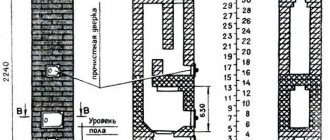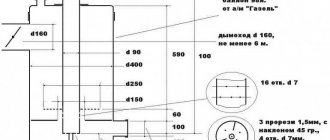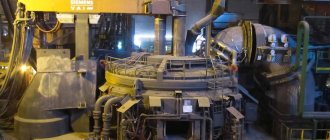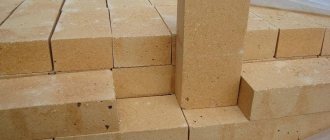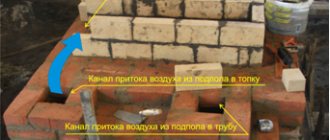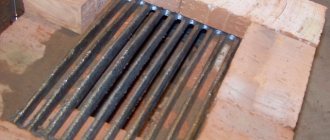The most important question for a novice ceramist is not “where to get clay,” because... it can be found anywhere, and not “how to make a pottery wheel from a washing machine”, because. You can sculpt without a circle. The most important question is “where to fire?” To fire ceramics, you need a special furnace that heats the products to a temperature of 1000°C.
You can, of course, buy a ready-made stove if funds allow. Or make a kiln for ceramics
yourself. We will look at how to make a kiln for firing ceramics with your own hands with a volume of about 30 liters and powered by a 220V network.
Muffle furnace
. The heating element is located outside around the chamber.
There are two types of electric kilns: muffle and chamber. In a muffle furnace, the heating elements are located around the muffle - a solid container made of refractory material. Our domestic schools are equipped with such stoves.
A chamber oven has heating elements inside. This type is preferable for us, because we want to make a stove that is not very small, and making a large and durable muffle is quite difficult. In addition, in a muffle furnace the heat loss is much greater than in a chamber furnace.
Do-it-yourself ceramic kiln. Calculation of a chamber furnace.
Author: Yuri Gorniy 11/01/2010
The most important question for a beginning ceramist is not “where to get clay”, because... it can be found anywhere, and not “how to make a pottery wheel from a washing machine”, because. You can sculpt without a circle. The most important question is “where to fire?” To fire ceramics, you need a special furnace that heats the products to a temperature of 1000°C.
You can, of course, buy a ready-made stove if funds allow. Or make a kiln for ceramics
yourself. We will look at how to make a kiln for firing ceramics with your own hands with a volume of about 30 liters and powered by a 220V network.
Muffle furnace
. The heating element is located outside around the chamber.
There are two types of electric kilns: muffle and chamber. In a muffle furnace, the heating elements are located around the muffle - a solid container made of refractory material. Our domestic schools are equipped with such stoves.
A chamber oven has heating elements inside. This type is preferable for us, because we want to make a stove that is not very small, and making a large and durable muffle is quite difficult. In addition, in a muffle furnace the heat loss is much greater than in a chamber furnace.
What to look for when choosing a stove?
*
Muffle units are more suitable for amateur ceramists. For professionals engaged in more or less large-scale activities, the best option is camera equipment. When choosing a device, you need to rely on:
- on the volume of daily firing;
- product dimensions;
- electrical wiring requirements (some units are designed for three phases).
The format of loading ceramics is also important. You need to build on your own preferences and financial capabilities. Vertical loading equipment will be appreciated by specialists with a limited budget. Moreover, the result in the “cheap” case is no worse than in the other case. The degree of comfort in viewing products from above depends on individual characteristics.
Figure 7. Top-loading wood burning equipment
When loading horizontally, it is not so easy to assess the distance between products, but there is an excellent overview of the tiers. To get a 360-degree view of the ceramics being processed, you should purchase bell-type furnaces. It is also the most expensive.
The cost of budget, “home” models starts from 30,000 rubles. The lower price level for professional options is about 100,000 rubles. The price of powerful, productive furnaces reaches half a million rubles.

Figure 8. Furnace chamber with hot ceramics
Making a kiln for firing ceramics.
The first step is to find a housing for the future stove. To do this, just look around a little. We found this washing machine, or rather what was left of it.
If you find yourself in a place where old washing machines and refrigerators are not thrown away, then you can buy a galvanized sheet and assemble a casing from it. Case dimensions: about half a meter in width and length, height - a little less than a meter.
We have a metal box, now we need to strengthen the bottom of our future stove. It is best to use a corner for this. We didn’t have a corner on hand, so we welded an ordinary pipe, 15 millimeters in diameter. We weld pieces of pipe with a larger diameter in the corners - these will be the legs.
You will also need to strengthen the top of the case, the door, and at least one edge on which the hinges for the door will be welded.
We lay a layer of basalt wool about 10 mm thick on the bottom. (The same layer will need to be laid along the walls.) To ensure that the cotton wool does not wrinkle under the weight of the camera, you need to lay several pieces of a square pipe or corner. After this, cover the cotton wool with a sheet of metal.
Now you need to decide on the refractories from which the chamber will be made.

Option 1. A very good option is fiber refractory boards. They can be ordered to the size you need, or cut on site. You only need six of these slabs.
Option 2 - fireclay refractory brick. Usually heavy fireclay bricks are sold everywhere. Fireplaces and other stoves are made from it. For our stove, it is better to use lightweight ones - brands ShA or ShL. For some reason, no one sells such bricks in our vicinity; in the end, bricks were found from friends. The bricks turned out to be used, but they were received completely free of charge.
To bind bricks, it is best to use a mortar that matches the brand of brick. But there are simpler options. For example, refractory clay or ready-made refractory masonry mixture. The mixture can be found where fireplaces are sold, or where you can find fire bricks. And in order to glue a brick to a metal sheet, you need to add cement to the mixture - up to 30%.
Kiln chamber for firing ceramics.
Let's start laying. The bricks must fit tightly together. Seams - no more than 5 mm. To do this, some bricks need to be cut to the required size. If you get used bricks, as in our case, then you will also need to file the edges of each one to form even edges.
We also line the door with bricks, cut out a quarter around the perimeter so that a protrusion is formed that will go into the oven window.
When the masonry is ready and has dried a little, we proceed to the next stage. Now you need to form grooves for laying the heating elements. In our case, these will be spirals made of nichrome wire with a diameter of 1 mm. The diameter of the wire turn is about 6-7 mm. We make grooves of the same thickness and depth.
Spirals can be found ready-made (for example, on the market) or made by yourself from nichrome or fechral wire. It is important that the turns of the spiral do not touch each other.
Let's make two contours of spirals, so that you can regulate the temperature with a switch, like in an electric stove. We bring the ends of the wire up. At the top, outside, we install a ceramic plate from an electric stove and secure the ends of the wire with bolts.
Spiral switch
. This is the switch we need. There are 2 contacts on one side, and 3 on the other. We install the switch so that its protruding pin goes out to the front panel. We connect the wires. Phase and zero are suitable for two contacts.
In the end it should look like this:
In the third, both circuits are connected in parallel, this is the highest temperature.
That's all. Now we need to thoroughly dry our stove. To do this, you need to put it in a warm place - near a radiator or in the sun and forget about it for a month, or better yet, two. After this, you will need to finally dry the stove by turning it on at first “speed” for several hours. When steam stops coming out of it, the stove is dry. You can start firing.
It is advisable to connect such a stove to a reinforced outlet - the one to which the electric stove is connected. Or run a thick wire from the shield. It would also be nice to install an additional circuit breaker (circuit breaker).
Yes, and one last thing: do not forget - with such an electric kiln, especially with open spirals, you need to be very careful. Any mistake can lead to very sad consequences. If you have little knowledge of electrics, be sure to consult a specialist. Do not touch live coils under any circumstances. To protect yourself and your loved ones, you can install a limit switch so that when the door is opened, the oven turns off. And grounding is also one of the safety conditions.
Significant technical addition from www.makuha.ru
Calculation of ceramic kiln heaters.
The formulas and calculation principle are suitable for both chamber and muffle furnaces. Although the presented calculation is simplified, nevertheless, it is more than enough for the manufacture of a homemade muffle, chamber furnace, electric crucible, etc.
In short, the whole point of the calculation is that, based on the given power of the equipment, select a heater of such resistance that the current passing through it has the required density and is capable of heating the heater to a given temperature.
The temperature to which the heater heats up depends on the resistivity of the heater material (physical property), its cross-section and the current that passes through it.
There are professional, complex calculation methods that take into account many different nuances, but all of them are ultimately based on the principle described above.
An example of calculating a heater for a furnace.
Required: ceramic firing furnace with a power of 3 kW, mains voltage U = 220 V; heater temperature 950°C.
Solid fuel stoves
*
Unlike the previous two, this variation is characterized by artisanal production. The wood-burning clay kiln is the ancestor of modern devices. Even now, when there is no shortage of advanced models, many potters do not abandon traditional designs. For a specialist, working with fire is not just a craft, but also a great pleasure.
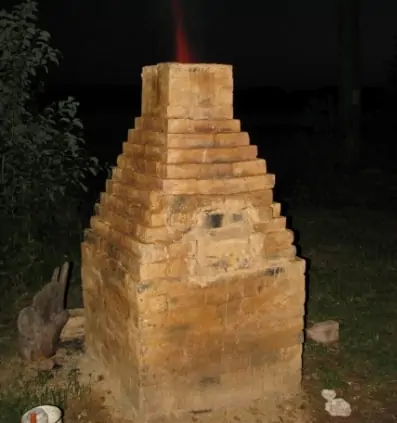
Figure 6. Wood-burning kiln for ceramic firing
Typically, such equipment is made of brick. Sometimes an iron barrel plays the role of a kiln. The brick option is preferable for many reasons, including high power, safety, reliability, and long service life.
In any case, a wood stove requires a foundation. The foundation is made no earlier than a day after constructing the hole and thoroughly compacting the bottom.
Brick kilns are usually made with two rows. The outer row of bricks makes work more comfortable - you won’t get burned on it. A chimney is used as a chimney. The wider and higher the latter, the more efficient the removal of waste and the safer the firing.
A wood-fired pottery kiln is not very efficient. Therefore, those who strive not only to maintain traditions, but also to be more productive, choose other options. But for the owner of a private house this is a good solution. Especially when you consider the cost of modern equipment. Although more technologically advanced devices can be made on your own.
Calculation and production of a muffle furnace. Part one - calculating the furnace power.
I decided to put all my calculations into a separate article. Firstly, it might be useful to someone else. Secondly, perhaps someone will pay attention to the obvious mistakes that I overlooked. Let's get started.
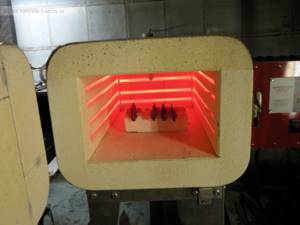
An electric resistance furnace is one of the simplest and most affordable types of furnaces for firing ceramics and melting some metals. The high temperature in the working chamber is achieved by heating a spiral made of wire with a high resistance index and a high melting point. Traditionally, nichrome or fechral wire of various brands is used for such furnaces. Nichrome is approximately twice as expensive as fechral, but its operating temperature is slightly lower. At the same time, fechral becomes brittle at high temperatures and its coefficient of thermal expansion is higher. That is, when heated, the fechral spiral can come out of the grooves, and therefore it is necessary to pay special attention to this during design. Nichrome wire costs about 2,000 rubles per kilogram, fechral wire costs less than 1,000. At the same time, fechral wire is more difficult to obtain locally. However, we are in no hurry - so we will order fechral wire with delivery. The combination of a more favorable price and the ability to maintain a higher temperature in the working chamber persuaded me to make a decision in favor of fechral. In addition, the resistance of fechral is approximately 25% higher than that of nichrome, which means that 25% less wire will be needed (the resistance of a meter of nichrome wire x20n80 with a diameter of 1.5 mm is 0.62 ohm, and fechral x23Yu5T is 0.815 ohm) In order to order For wire, you need to know the grade of the alloy, the diameter of the wire and the number of linear meters. Well, let's try to calculate this whole thing. We will choose the brand X23YU5T. The melting point is 1500 degrees, which allows you to accelerate the stove to 1200-1300 with good thermal insulation of the working chamber.
The volume of the calculated furnace is 61 liters, the working chamber is 560x340x320.
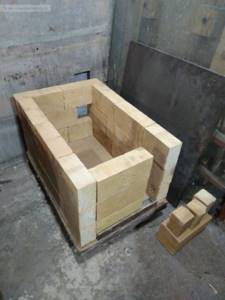
For small stoves, the power is selected based on a simple proportion - 100 watts of power per liter of chamber volume, that is, for 61 liters the stove power will be 6.1 kW. Initially, I carried out calculations for a stove with a volume of 67 liters, but since I’m too lazy to recalculate, we’ll add 600 watts of power in reserve - it definitely won’t be any worse.
Since there are three phases in the workshop, we will power the furnace from a three-phase network. Since there are three phases, there will also be three heaters. So, we need to select 6.7 kW of power from a three-phase network.
First, let's calculate how much current we need to pass through the heating elements when connected by a star. I=P/U. I = 6700/220 = 30.45A. But this is the total current, let’s divide it into 3 phases and get 10.15A per phase. Very comfortable current. When connected with a triangle, we get an even lower current - 17.63A - or 5.88 A per phase. However, this current flows through heaters connected between the two phases. A current of 10.15 A also flows along the section of the circuit, from the input to the connection of the heaters. Therefore, there is not much difference. We will decide which connection scheme to choose from the point of view of optimizing the amount of wire in the spiral, since the resistance will be different.

By the way, now we can calculate the wire resistance required to obtain the design power. For each section of the star circuit it will be R=U/IR=220V/10.15A = 21.67 Ohms. For each section of the delta circuit it will be 380V/5.8A = 64.6 Ohms
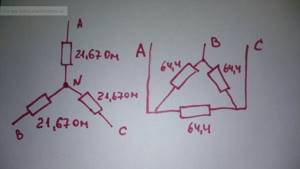
There is resistance, all that remains is to find a table and measure the required amount of wire. For the selected brand of fechral, the resistance of one meter of wire will be as follows: D = 1.5mm - 0.815 Ohm, D = 2mm - 0.459 Ohm, D = 2.5mm - 0.294 Ohm, D = 3mm - 0.204 Ohm.
Let's consider a star. The resistance of one heater should be 21.67 Ohms. That is, we will need 21.67/0.815 = 26.6 meters of wire. Three heaters will require 80 meters of wire. Let's just say - not a little. But on the other hand, little or much - this is the essence of our reasoning and reluctance to give extra money, and the calculation says that this is exactly the amount of wire we will need. What can I order? There is no point in calculating a larger diameter of the wire - since already the two has half the resistance and therefore we will need twice as much of it. There is also no point in calculating the option with a triangle; there we need a resistance of 64 Ohms for the circuit - and this is three times more wire. So the calculation is over? No matter how it is! Let's calculate the surface area of our heaters. Knowing the surface area, we can calculate how much energy is emitted from 1 square cm of surface. Surface area S = Length (L) x Diameter (d) x 3.14 (Pi) = 8000 (in centimeters) x 0.15 (in centimeters) x 3.14 = 3768 sq.cm. Thus 3768 sq.cm. emits 6.7 kW of power. That is, 1.77 watts are emitted from 1 sq.cm. What we have now calculated is nothing more than the magnitude of the surface load. Knowing this value, we can determine whether our wire will overheat. The fact is that as this indicator increases, the difference between the temperature in the core of the wire and the temperature on its surface increases. At values well above 2 Watts per sq. cm, this value can vary by a hundred degrees. What this entails, I think, is clear - while the outer surface is at operating temperature, the core can heat up to temperatures close to the melting point, which will lead to burnout of the wire. For domestic fechral wires, the optimal coefficient is from 1.2 to 1.4 W/sq.cm. The value we obtained is slightly higher, but still quite applicable. As an illustration, let's see what we get if we take the next diameter - two. 21.67/0.459 = 47.21 meters for 1 heater. That is, for 3 heaters - 141 meters of wire! Let's calculate the value of the surface load - we get 0.76 W/sq.cm. - this is very little. Almost half the recommended value - this means that the wire will transfer heat less efficiently. And if you take the same 80 meters in doubles? Then the resistance in the circuit section for one heater will be 12.24 ohms, respectively, the current will be 18A, and the power of the section will be 4 kW, three heaters will give 12 kW of power, and the surface load value will be 2.38 W/sq.cm.
Calculation of the hardening furnace
CALCULATION OF HEATERS
The power of each of the two circuits is 2.5 - 3 kW (i.e. in total with parallel connection 5 - 6 kW).
We calculate the spirals using the formula:
L=SR/ρ
where L is the length of the wire (m); S—wire cross-section (mm2); R—wire resistance (Ohm); ρ - resistivity (for nichrome ρ=1.0÷1.2 Ohm mm2/m).
Our wire is 1mm nichrome. We calculate the cross-sectional area S:
S = πD2/4
S = 3.14*1/4=0.79mm2
We calculate the current strength for a power of 3000 W and a network voltage of 220 V:
I = P/U
I = 3000/220 = 13.6A
Now let's calculate the resistance:
R = U/I
R=220/13.6=16.2 Ohm
We substitute the obtained data into our formula and get the length of the wire:
L = 0.79*16.2/1.1 = 11.6m
For a power of 2.5 kW it will be about 14 m. Something like this)
2 Star circuit:
For a 60-liter oven, power consumption: P = 6.0 kW. This figure is the sum of the power of three branches (P=P1+P2+P3). That is, each branch consumes 2.0 kW.
The network voltage of each branch is 220 volts (phase-zero).
The current in each branch (also the total current consumption) is 9.0 Amperes (we divide the branch power by the voltage on it: 2000/220 = 9).
The resistance of each branch is the same and is equal to: R1=R2=R3=220/9=24.44 Ohm
This means that a 60 liter oven requires three 24.44 ohm heating elements connected in a star configuration. But this is the calculated resistance of the heater at room temperature, and as you know, when heated, the resistance increases! And it may turn out that your oven will not be able to heat up to the designed temperature! Therefore, it is necessary to reduce the resulting calculated resistance value by 10..15%, and use it in practice! In our case: 24.44 – 10% = 21.996 Ohms. Round up to 22 ohms.
We obtained the required heater resistance in each phase - 22 Ohms.
What is 22 Ohm? – this doesn’t tell you anything, does it?! But you need to know exactly: what diameter spiral to wind, from what diameter wire and what pitch of laying the turns!?
Before starting these calculations, let's draw a diagram of the muffle. Its internal diameter is 400 mm, height – 550 mm. The approximate pitch of laying heating coils inside the muffle is 40-60 mm.
These numbers are determined by the design of the muffle. In our case, the height of the brick is 50 mm, which means the pitch of laying the spirals is 50..52 mm. (it is necessary to take into account the possible grinding of the bricks, the thickness of the adhesive joint..). At the top and bottom we retreat 40 mm. It turns out that we can place 9 spirals (the number should be odd, because there are exactly three phases!).
As mentioned earlier, we choose Eurofechral GS 23-5 as the wire for winding the spirals. Below is the resistance value of one linear meter of this material, but of different diameters:
Electrical resistance:
Ohm/m at t=20 °C for a diameter of 1.8 mm. – 0.566
Ohm/m at t=20 °C for a diameter of 2.0 mm. – 0.458
Ohm/m at t=20 °C for a diameter of 2.2 mm. – 0.379
But what wire diameter should I choose? This depends on the amount of current flowing.
From reference books, recommended values are given for the X23Yu5T alloy. We will use them for Eurofechral.
Recommended wire diameters Х23У5Т
Current, A 1.0 2.0 3.0 4.0 5.0 6.0 7.0 10.0 15.0 20.0 25.0
Diameter, mm 0.2 0.3 0.5 0.6 0.7 0.8 0.9 1.3 2.0 2.5 3.5
In our case, the current through the heater is 9 amperes. If we use wire with a diameter of 1.8 mm. then it will work quite comfortably. Why exactly 1.8 mm? not 2.0 mm. or another? It’s just that it was in stock at the seller’s warehouse!
In general, from experience, the thicker the wire (within the limits of calculations), the longer it works in the furnace.
In order to calculate the required wire length, we divide the resulting resistance of one branch by the resistance of one linear meter of the selected wire.
For wire with a diameter of 1.8 mm: 22/0.566 = 38.869 m. Round up to 39 m.
The oven will require three spirals (one in each branch). In total you need to purchase 39 x3 = 117 m. Or, rounded up - 120 meters. The specific gravity for Eurofechral GS 23-5 is: 7.1 g/cm3. Having found the volume of 120 meters of wire (the volume of the entire wire is equal to the area of the circle multiplied by the length, convert everything into meters): ?R?L (3.1416x0.0009?x120=0.000305 cubic meters), and multiplying by its density - 7100 kg/m3, find the weight. It is equal to 2.17 kg. At a price of 315 rubles/kg. (September 2006, including delivery from Moscow), you will spend about 684 rubles. for the purchase of wire for the manufacture of all heating coils for the furnace.
You can do similar exercises in arithmetic yourself for wire with diameters of 2.0 and 2.2 mm.
We calculated that a total of 120 m of wire would be required. Let's decide on the diameter of the spiral and the pitch of its winding.
The diameter of the spiral is selected from the condition (known from reference literature):
D=(6..8)d - for nichrome
D=(4..6) d - for iron-chromium aluminum (Eurofechral)
.
Spiral winding.
In practice, the spiral is usually wound on a lathe. On a special mandrel, turn to turn.
After this, the spiral is formed on a special one. Before laying in the template, the spiral is first evenly stretched to a given length, and only after that it is given the necessary radii of curvature for comfortable placement in the grooves of the muffle!
We settled on the outer diameter of the spiral being 16 mm. This is due to the diameter of the channel where the spiral is placed and the fact that a smaller diameter will require a larger number of turns, and as a result, a larger length of the spiral. In addition, when winding a spiral with a diameter of 16 mm. on a lathe you can use a calibrated rod with a diameter of 12 mm as a mandrel. (at first, for experiments, we made a spiral with an outer diameter of 15 mm, and for this we had to grind a long rod with a diameter of 12 mm to a diameter of 11 mm - how much unnecessary and expensive work!).
The winding pitch is chosen to be 5.0 mm. When determining the winding pitch, you must be guided by the following criteria:
— a small pitch means a large thermal output of the spiral, but there is a danger of interturn short circuit.
- large step - the effective thermal output of the spiral is reduced, but there is no danger of interturn short circuit.
Made of wire with a diameter of 1.8 mm. and 120 m long, you can wind 2400 turns (the length of one turn of the spiral is calculated using the formula 3.1426xD (don’t forget to convert everything into meters!). Taking into account the spiral pitch of 5.0 mm, the total length of the spiral will be 12 meters.
As we previously calculated, 9 grooves were made inside the firing chamber (the outer diameter of the groove is 440 mm). That is, one turn inside the chamber will require 1.38 meters of spiral. Our 12 meters of spiral will fit into these grooves quite comfortably!
One practical point: we have three phases, each phase has a separate spiral. Divide 12 meters by 3, we get 4 meters of spiral for each phase. But it's not technologically advanced! – winding such a long spiral evenly and laying it down is a big problem! In addition, if it burns out, the entire coil will need to be replaced - and this is expensive! The solution is to make a spiral in each phase consisting of three spirals connected in series. So, in each phase three spirals 1.33 meters long will fit, with a pitch of 5 mm. This is already a quite practical length: it is easy to remove or install the spiral.
Bottom line: for a stove with a volume of 60 liters and a power of 6.0 kW, you will need 9 spirals with an outer diameter of 16 mm and a length of 1.33 m each.
Practical advice.
The wire for spiral winding is usually supplied in the form of a coil with a diameter of about 0.8 m. To measure the required length to wind a 1.33 meter long spiral, you will have to rack your brains! You can try to stretch it, take a tape measure and measure. But for this you need at least 2-3 people and a long room - up to 15 m. And it’s dirty outside... We made it simpler: we hung a coil with wire on a wooden block. We separated 5..6 turns from the bay and from each other (so that the turns did not touch each other). A multimeter (cheap Chinese, with a digital scale) was connected with one wire to the end of the coil, and the second was attached to approximately the sixth turn. Moving this conductor along the wire, we found a position where the multimeter showed 7.33..7.35 Ohms on the display. Wire cutters were used to cut the wire in this place. The resulting segment is exactly 12.9 meters (just for fun, we checked it with a tape measure - it matched!).
*(Numbers 7.33..7.35 Ohm - resistance of each of the 9 wound spirals).
Modified on June 27, 2013 by sevst
Calculation of dimensional and electrical parameters of the furnace
This stage is fundamental, since it determines the main parameters of the muffle furnace for firing ceramics.
The starting parameter is the internal volume of the muffle furnace. If the volume of fired products is large, kilns with a large volume are selected; if the volume of products fired is small (amateur potters), kilns with a smaller volume are chosen.
As our practice of manufacturing ceramic kilns shows, the GRIFON-60 kiln with a capacity of 60 liters is most often ordered. Because it combines optimal volume and price!
In parallel with the theoretical calculations, a 33-liter ceramic furnace will be calculated.
Calculation of muffle furnace volume
The figure below shows the muffle of a kiln for firing ceramics, i.e. the working layer of the furnace or otherwise the internal insulating layer. Basically, it has a dense structure, as it is most often used to attach heating elements (spirals), as well as to give the working layer mechanical strength.
Since the perimeter of our muffle furnace is an octagon, its volume ( V ) is calculated as follows:
furnace muffle
V=S*H (dm3=liters),
where S=2*K*(F) 2 is the area of the muffle bottom; K =2.41 - coefficient; F is the length of the inner face of the muffle (dm) (see Fig. 1); H is the height of the inner part of the muffle (dm) (see Fig. 1).
Since the volume of the furnace is usually expressed in liters, all quantities must be expressed in decimeters.
V = 13.76*2.39 = 32.8 ≈ 33 (dm 3) = 33 (liters), where
S = 2*2.41* (1.69) 2 = 13.76 (dm 2); K =2.41; F = 169 (mm) = 16.9 (cm) = 1.69 (dm); H = 239 (mm) = 23.9 (cm) = 2.39 (dm);
Materials for making the muffle and furnace cover
For the manufacture of stoves we use the most modern materials. For the working layer of the lining (muffle and furnace lid), we use lightweight refractory bricks, which we import from Germany. This brick has excellent thermal characteristics, namely, low thermal conductivity, high thermal and heat resistance. The classification temperature for use of this brick is 1430 °C. At the same time, the brick is quite light due to its low density and is well processed mechanically. This allows you to mill grooves in bricks for installing heating elements. Milling ensures the highest precision of the grooves for the spiral.
Heater materials
Heaters are the most important element of the furnace, and they must meet many requirements.
- Heat resistance and heat resistance. Wire heaters must have good heat resistance (the resistance of a metal or alloy at high temperatures to gas corrosion), as well as high-temperature resistance.
- Low temperature coefficient of resistance. This factor is important when choosing a material. A low coefficient means that even when the material is heated, its electrical resistance changes very little. For example, if this temperature coefficient is large, then in order to turn on the furnace in a cold state, it is necessary to use reduced voltage transformers at the initial moment.
- High electrical resistivity. The heater in an electric furnace must have this characteristic. The higher the resistance value, the more the material can heat up, and the shorter it is needed. The larger the diameter of the heating wire, the longer its service life. Materials with very high electrical resistance are chromium-nickel precision alloys nichrome X20N80 and X15N60, and fechral alloy X23Yu5T.
- Good technological properties. The materials must have good ductility and weldability, since they are used to make: wires, tapes, and heating elements of complex shape.
- Constant physical properties. Neither should change at high temperatures, for long periods of time.
Nichrome and fechral, which have high electrical resistance, are best suited for the production of electric heaters for electric furnaces. For more information about the grades and their properties, see GOST 10994-74.
Nichrome grades suitable for the manufacture of heaters: X20N80, X20N80-N, X15N60, X15N60-N.
Brands of fechral suitable for the manufacture of heaters: Kh23Yu5, Kh23Yu5T, Kh15Yu5, Kh27Yu5T.
Also iron - chromium-nickel alloys: Kh27N70YuZ, Kh15N60Yu3.
All these alloys have the characteristics described above. For example, high heat resistance is ensured due to the formation of a chromium oxide film on the surface.
Compare nichrome and fechral
Advantages of nichrome:
- Excellent mechanical properties at any temperature;
- creep resistance;
- Plastic and well processed;
- Has excellent weldability;
- does not age;
- non-magnetic.
Advantages of fehrali:
- has a lower price than nichrome, since it does not contain expensive nickel;
- Fechral X23Yu5T has better heat resistance than nichrome. Fechral wire 6 mm thick can operate at 1400 °C.
Disadvantages of nichrome:
- More expensive than fechral, since the main component nickel has a high cost;
- The operating temperature is lower than that of fechral.
Disadvantages of fehrali:
- the alloy is more brittle, especially at temperatures of about 1000 °C and more;
- Low creep resistance;
- the alloy is magnetic because it contains iron. Fechral also rusts in humid environments.
- Interacts with iron oxides and fireclay lining;
- During operation, fechral heaters elongate.
There are also alloys Kh27N70YuZ and Kh15N60Yu3 which contain 3% aluminum. This element makes it possible to improve the heat resistance of alloys. These alloys do not react with iron oxides or fireclay. They are non-fragile, durable and well processed. The maximum operating temperature is 1200 °C.
Heaters are also made from refractory metals or non-metals (coal, molybdenum disilicide, graphite, carborundum). Molybdenum disilicide and carborundum are used for heaters in high-temperature furnaces. Graphite and carbon heaters are used in furnaces with a protective atmosphere.
Refractory metals that are often used are tantalum, molybdenum, niobium, and tungsten. Tungsten and molybdenum are used in furnaces with a protective atmosphere, as well as high-temperature vacuum furnaces. Molybdenum heaters are used in vacuum up to 1700 °C and in a protective atmosphere at temperatures up to 2200 °C. This feature is that molybdenum begins to evaporate at a temperature of 1700 ° C (vacuum). Tungsten heaters are capable of operating at... up to 3000 °C. Niobium and tantalum are very rarely used to produce heaters.
Muffle furnace heater calculators
If a home craftsman, due to the nature of the work he performs, needs a muffle furnace, then he, of course, can purchase a ready-made device in a store or through advertisements. However, such factory-produced equipment costs quite a lot. Therefore, many craftsmen take on the production of such stoves on their own.
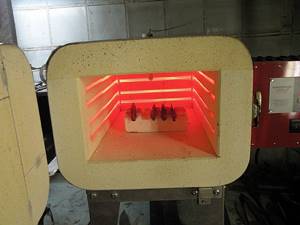
Muffle furnace heater calculators
The main “working unit” of an electric muffle furnace is a heater, which in handicraft production is usually made in the form of a spiral of special wire with high resistance and thermal output. Its characteristics must strictly correspond to the power of the equipment being created, the expected operating temperature conditions, and also meet some other requirements. If you plan to manufacture the device yourself, we recommend using the algorithm and convenient calculators proposed below for calculating the muffle furnace heater.
The calculation requires certain explanations, which we will try to present as clearly as possible.
Algorithm and calculators for calculating the muffle furnace heater
What are heating coils made of?
To begin with, just a few words about the wire that is used for winding heating coils. Typically, nichrome or fechral is used for such purposes.
- Nichrome (from the abbreviations nickel + chromium) is most often represented by the alloys X20N80-N, X15N60 or X15N60-N.
Muffle furnace prices
Its advantages :
— high safety margin at any heating temperature;
— plastic, easy to process, weldable;
- durability, corrosion resistance, lack of magnetic qualities.
Flaws:
- lower heating and thermal stability compared to fechral.
- Fehralevaya (from the abbreviations ferrum, chromium, aluminum) - in our time, material from the X23 Yu 5T alloy is more often used.
Advantages of fechral:
- much cheaper than nichrome, which is mainly why the material is widely popular;
— has higher resistance and resistive heating indicators;
Flaws:
- low strength, and after even a single heating above 1000 degrees - pronounced fragility of the spiral;
— presence of magnetic qualities, susceptibility to corrosion due to the presence of iron in the composition;
- unnecessary chemical activity - capable of reacting with the fireclay lining material of the furnace;
— excessively large thermal linear expansion.
Each of the masters is free to choose any of the listed materials, analyzing their pros and cons. The calculation algorithm takes into account the features of this choice.
Step 1 - determine the power of the furnace and the current passing through the heater.
In order not to go into unnecessary details in this case, let’s say right away that there are empirical standards for matching the volume of the working chamber of a muffle furnace and its power. They are shown in the table below:
How to determine the power and current of the furnace
The calculation of the furnace begins with its future power. The current strength that will pass through the heater body is also determined. To do this, you can use basic empirical norms for the ratio of the size of the device’s chamber to its power.
If the volume is from 1 to 5 liters, it is desirable that the power of the equipment be in the range from 300 to 500 W per liter. When the chamber is planned for industrial use and its volume reaches 100 liters or more, the calculation of the muffle furnace should take into account approximately 50-60 W for each of them.
Detailed table of recommended power standards for various chamber volumes

Carrying out the necessary calculations is not difficult at all. The volume itself is easily calculated based on data on the height, width and depth of the chamber, and then multiplied by the desired indicator. For example, a 5 liter oven with a load of 300 W/l will have a total power of 1500 W.
Determining the current strength is also quite simple. The basic network voltage is known and is 220 V.
After this, the furnaces are calculated, the formula of which is as follows:
I =P/ U
P – pre-calculated power, in our case 1500 W.
U – network voltage.
Thus, we have: 1500/220 = 6.8 A.
How to calculate the smallest cross-section of an electric furnace heating element
Calculation of electric furnaces must necessarily be carried out taking into account the characteristics of the heating element itself. After all, if a current passes through it, more than it can bear, failure is inevitable. When planning the design of a muffle or shaft electric furnace, be sure to take into account the future diameter of the heater.
It can be calculated by knowing the current strength and the expected operating temperature. Recommended standards are shown in the photo below.
Table for determining parameters of an electric furnace heater. Find out the required diameter and cross-section
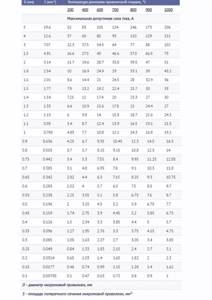
If the table does not contain an exact value that matches your calculation, this is not critical. When our current strength is equal to 6.8 A, it is worth taking as a basis the indicator 7.7, that is, the nearest larger one. The minimum diameter and cross-section will ensure a smooth and safe firing process.
You can even include a more powerful heating element in the design of the heating furnace. It is strictly forbidden to reduce the parameters, because then it will burn out very quickly
How to check the correct surface power of the heating element
If you plan to create long-lasting tubular furnaces, the calculation must also include the item of checking the surface power of the heating element with an acceptable value. This will help to detect a possible failure in time and determine the limits of the capabilities of this component of equipment.
Surface specific power indicates how much thermal energy must be obtained from each unit of heater area
The method for calculating tube furnaces first involves searching for an acceptable value. It can be obtained using the formula:
βadd = βeff x α
βadd – directly permissible power.
βeff – power, which depends on the operating temperature range.
α is the efficiency coefficient of heat radiation by the heating element.
When calculating the firing furnace, we include the βeff and α indicators from the tables shown in the photo below.
Table for calculating effective power based on the temperature of the workpieces and the heater itself

Coefficient α is also selected from tabular data. It directly depends on the location of the heater coil inside the furnace structure.
The values of the correction factor are an important aspect that should be taken into account when calculating shaft furnaces
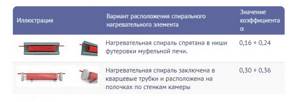
Subsequently, these 2 indicators are multiplied among themselves and give us the limit value of the permissible power.
This will be the final stage of equipment design.
As you can see, calculating heating elements is quite a difficult matter. Therefore, it is easier and better to order electric furnaces for roasting and other types of heat treatment from a reliable manufacturer. This is exactly what the Lithuanian manufacturer SNOL is, whose products are presented on our website. Don’t delay and quickly choose the right model!
How to calculate the length of the heater wire to create a spiral
The method for calculating the furnace also involves determining the optimal length of wire for the base of the heating element. This is very important, because the creation of the necessary resistive heating depends on it.
In order to accurately calculate the hardening furnace, we will need the following data:
- Mains voltage.
- Current strength.
- Heater cross-sectional area.
- Conductor resistivity.
The last indicator can be found in the photo below.
The resistivity value, depending on the diameter and material of the heater

Next, the calculation of thermal furnaces is carried out according to the formula:
L = (U / I) x S/ p
In our case, if we use nichrome alloy X20N80-N for the heater, the length of the wire will be: (220/6.8) x 0.785/1.11. That is, approximately 23 meters.
Online calculation of the length of nichrome wire, spiral, for a heater
For one communications star acquaintance, calculating the length of the wire for the heater was a mega task. He didn’t worry about this issue at all, but simply snorted and measured the resistance of the spiral wire with an ohmmeter every twenty to thirty turns, all enveloped in cigarette smoke from the Prima. And he cursed if he reeled in too little or too much. However, he was a great guy and a telephony specialist. At this stage of my life, winding heaters is not particularly relevant for me, but I still decided to write this online calculator for calculating the length of the wire. Maybe it will be useful to someone.
To use the calculator, enter the necessary parameters of the heater or electric stove in the appropriate fields and click the button “Calculate the length of the wire for the heater spiral“.
The results obtained do not take into account the increase in the electrical resistance of the conductor with increasing temperature. Therefore, the actual power (as well as the current consumption from the network) is always slightly lower than the calculated values.
Required heater or electric stove power W
Supply voltage V
Select the wire material for winding the spiral
NichromeConstantanChromalFehral
Select the wire diameter from standard industrial sizes. Do not forget that the cross-section and diameter of the wire are different concepts. If we don’t know the diameter, we use a micrometer or caliper. I wonder why you need nichrome with a diameter of 10 mm, what do they even need to wind? Probably a detonator for a thermonuclear reactor.
0.10.20.30.40.50.60.70.80.91.01.21.52.02.22.53.03.54.04.55.05.56.06.57.07.58.08.59.010.0 mm
Permanent page address https://nemezida.su/online_raschet_dlini_provoloki_plita_nagrevatel.htm
www.nemezida.su




